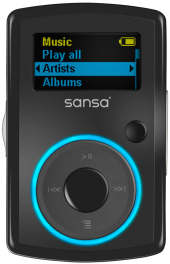Proving my point from before that everything wants to be “HD” these days, I read the Zune HD specs that come out recently and in that I found out that it claims to support HD radio. Amusingly enough, it does not claim mp3hd support which probably would’ve made the buzzword bingo crowds go wild. We can always hope for the next model! 🙂
So what is HD radio? The site says:
Instead of sending out one analog signal, stations send out a bundled signal – both analog and digital. Because it is digital, textual data such as traffic, stock info and song titles can be sent out, as well.
From what I understand, pretty much the same way RDS is already done.
The technology is not even new. The site lists news items from 2006 and yet I’ve never heard of it before. They claim FM stations get “CD-quality sound” and (as I find pretty funny) AM stations get “FM-quality sound”. What is “CD-quality” in this context I wonder? I find no mention or details on what exact codecs or bitrates etc they use. Wikipedia’s page to the rescue: it says you get approximately 100-150 kbps of a lossy “proprietary iBiquity HDC codec” which claims to be able to provide “CD quality as low as 64 kbit/s”. Somehow I think that sounds a little too good to be true. According to wikipedia HD radio beats DAB in audio quality.
And to top it all of, the FAQ describes what the HD means:
It does not mean either hybrid digital or high definition, it is simply the branding language for this new technology.
Personally I’ll just rather go IP all the way and stream my music/radio/video over that. I think media or content-specific transfer mediums/concepts of this kind are technologies of the past. For this reason, I don’t think DAB+ will have much of a future either.

 a Clip
a Clip

